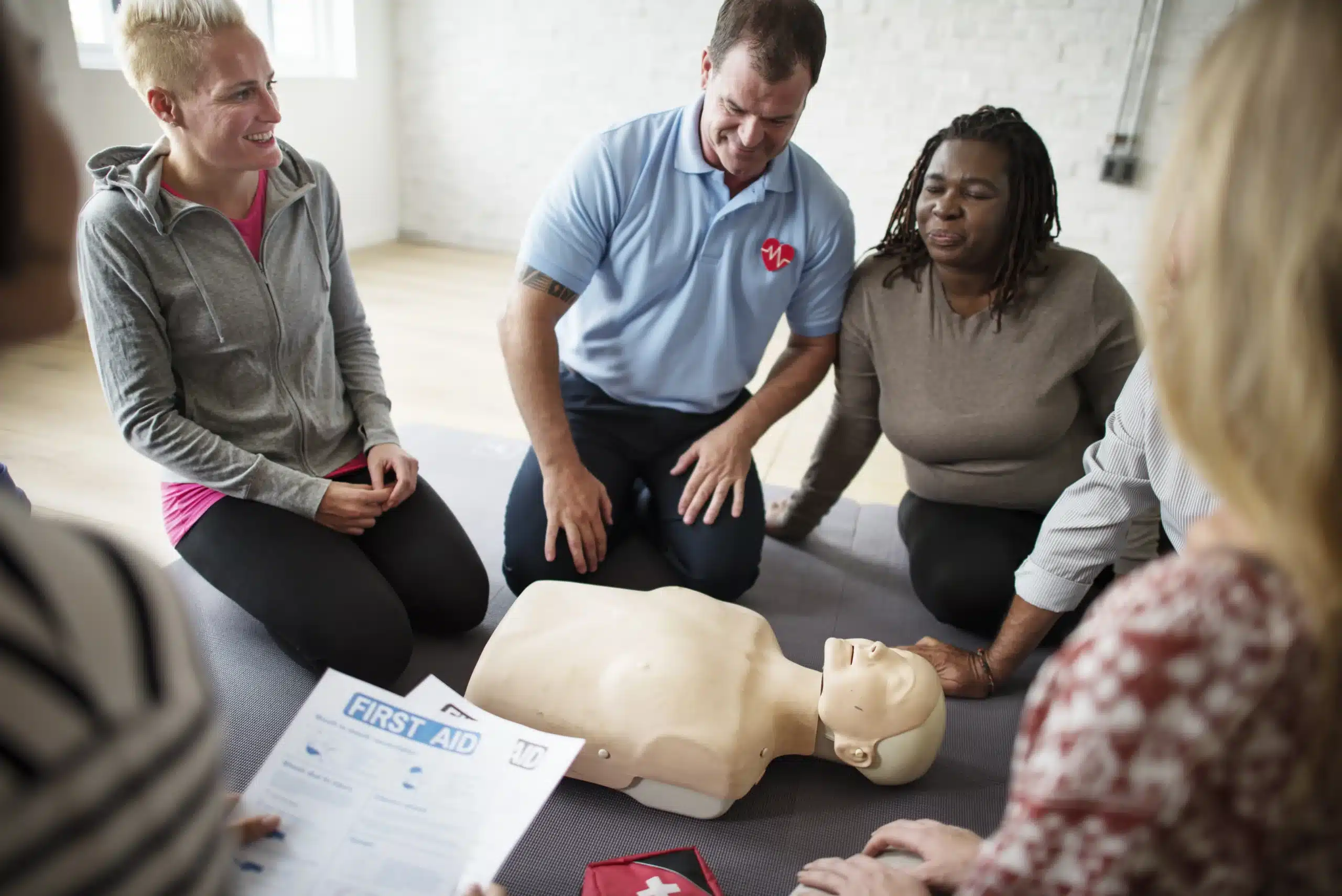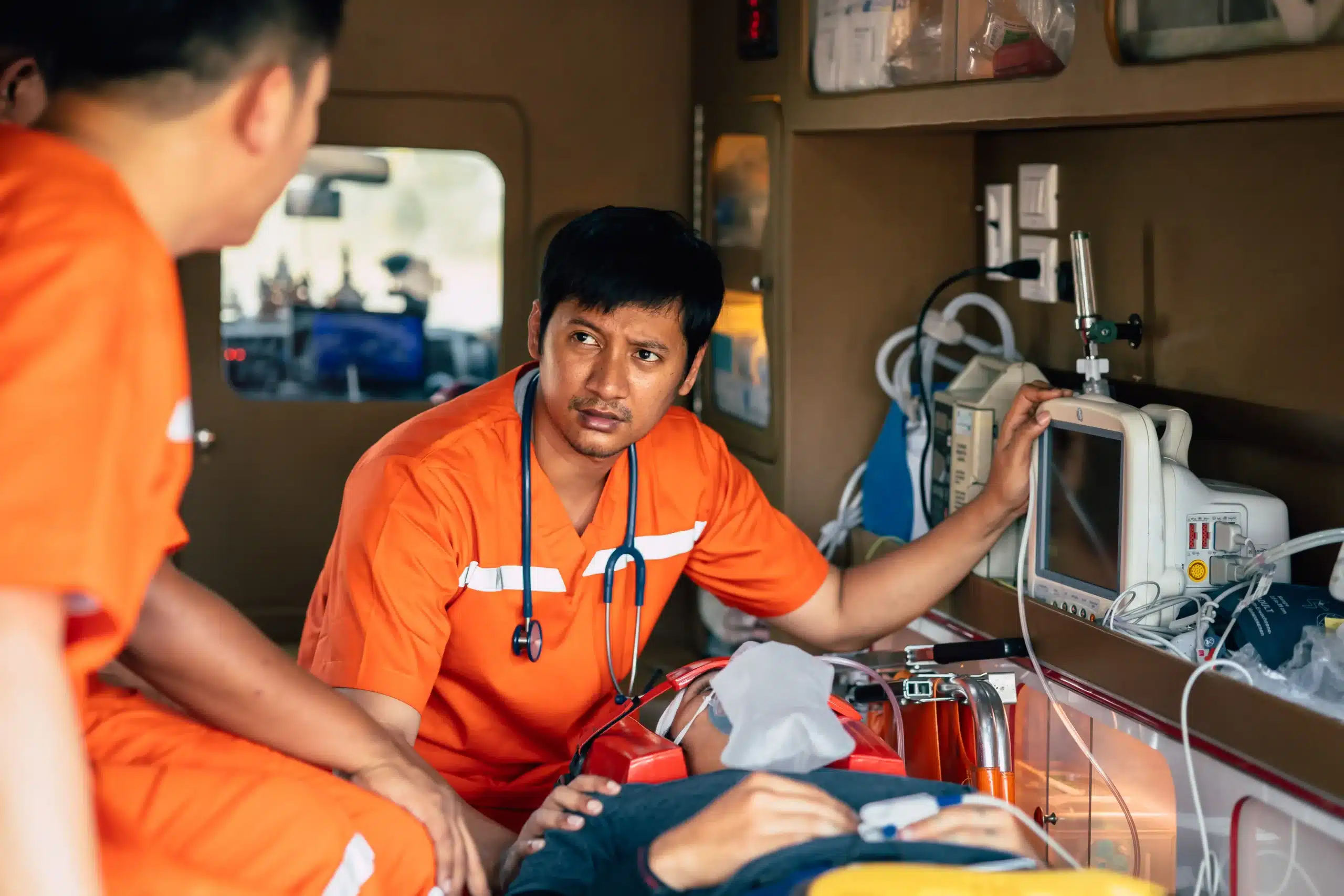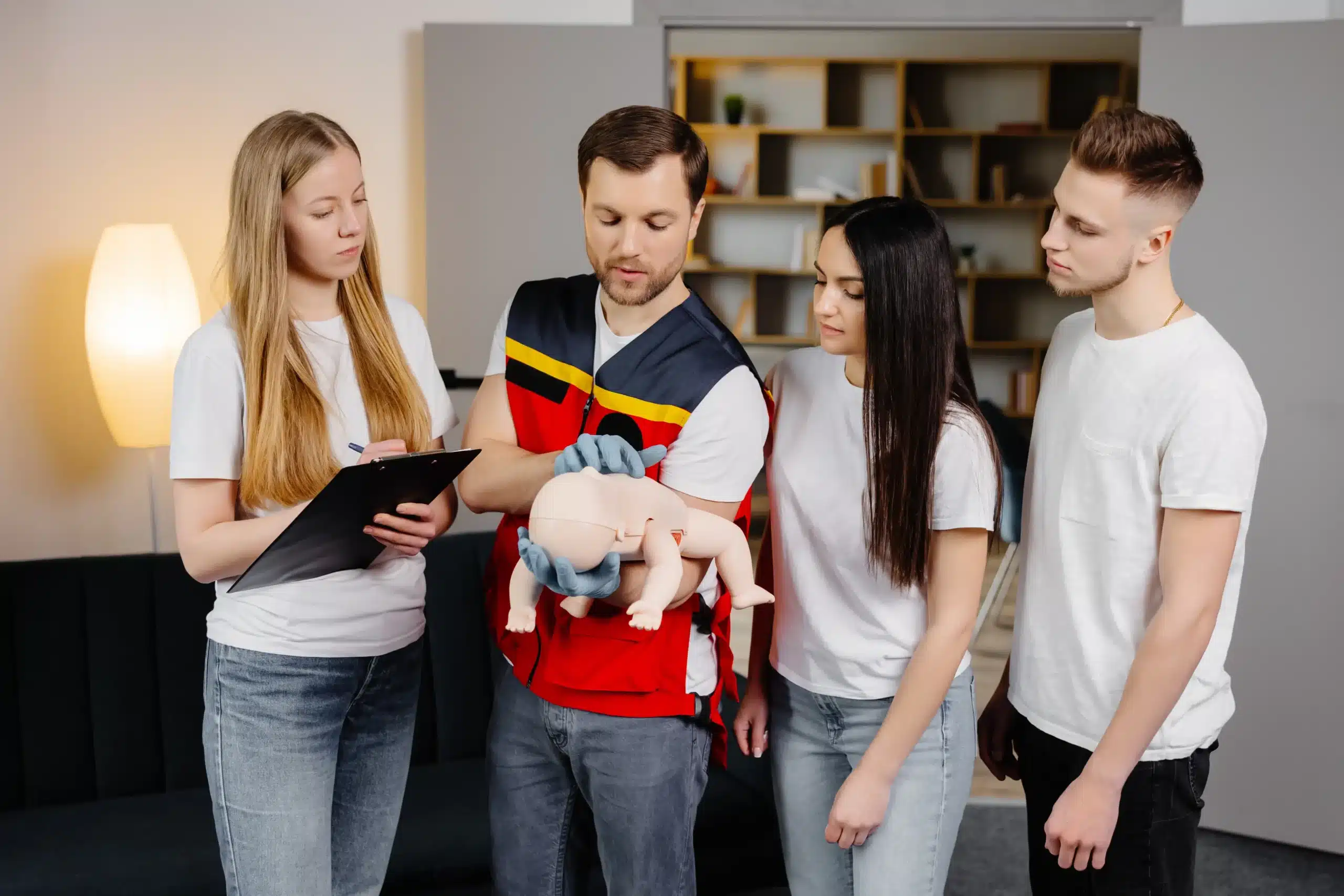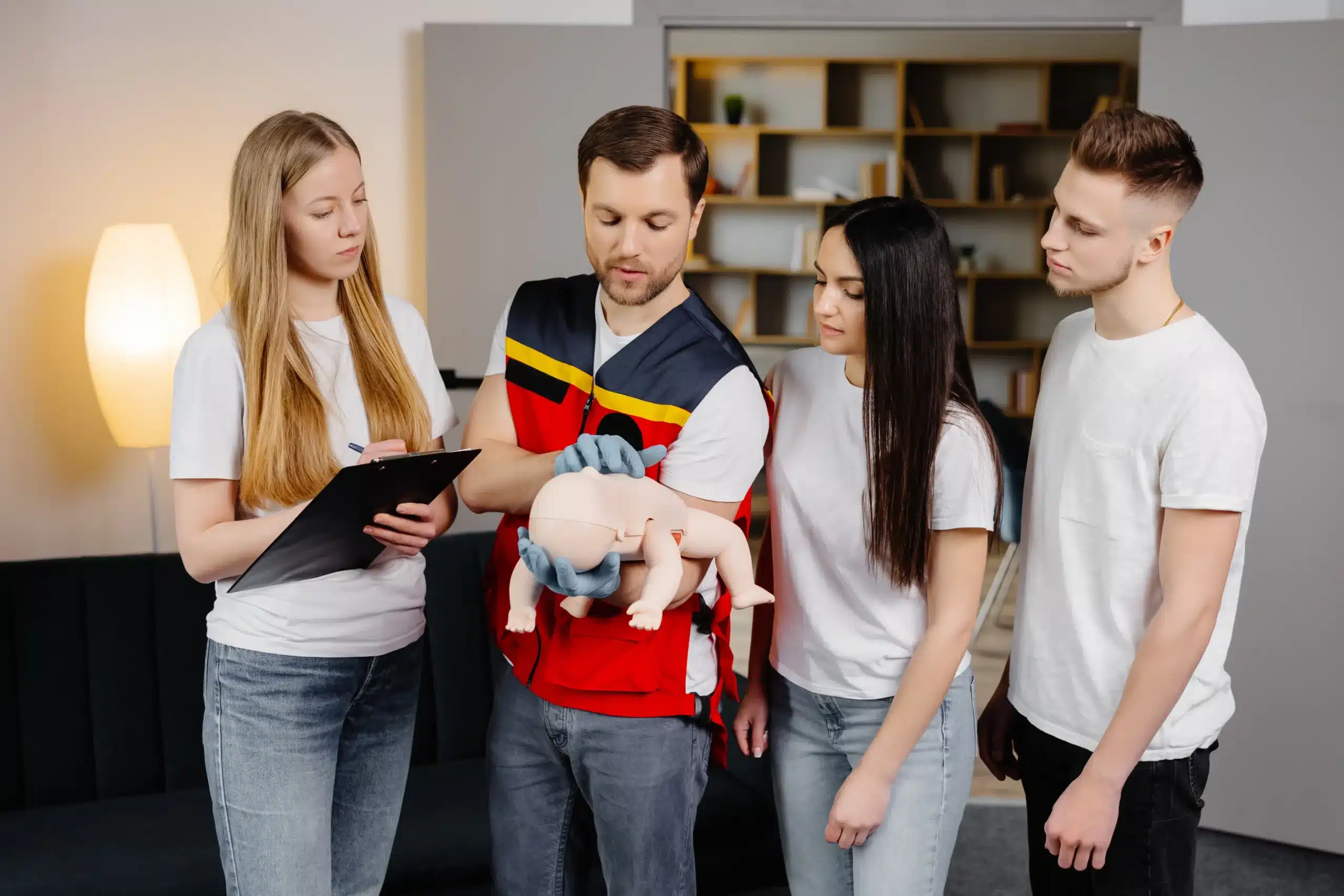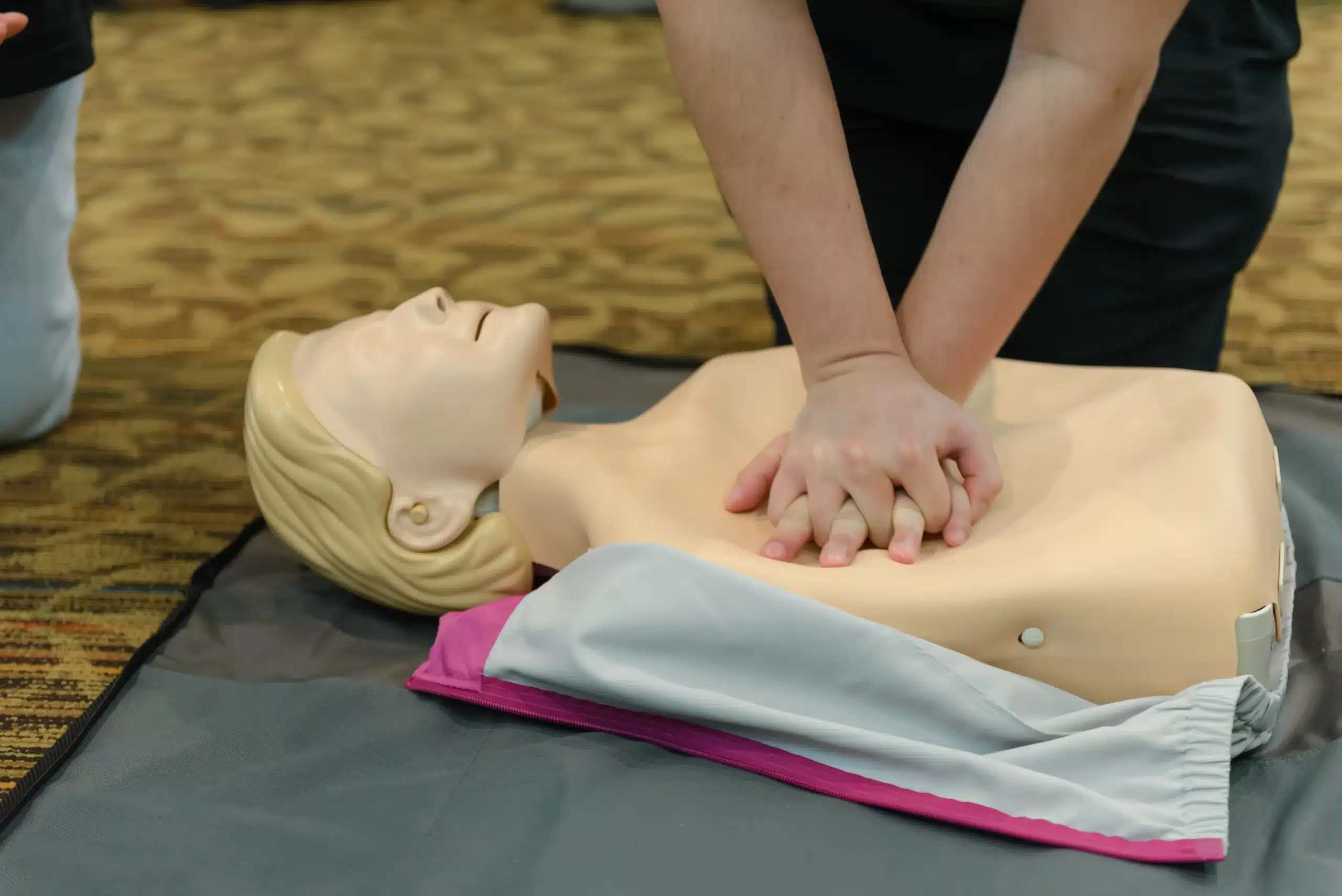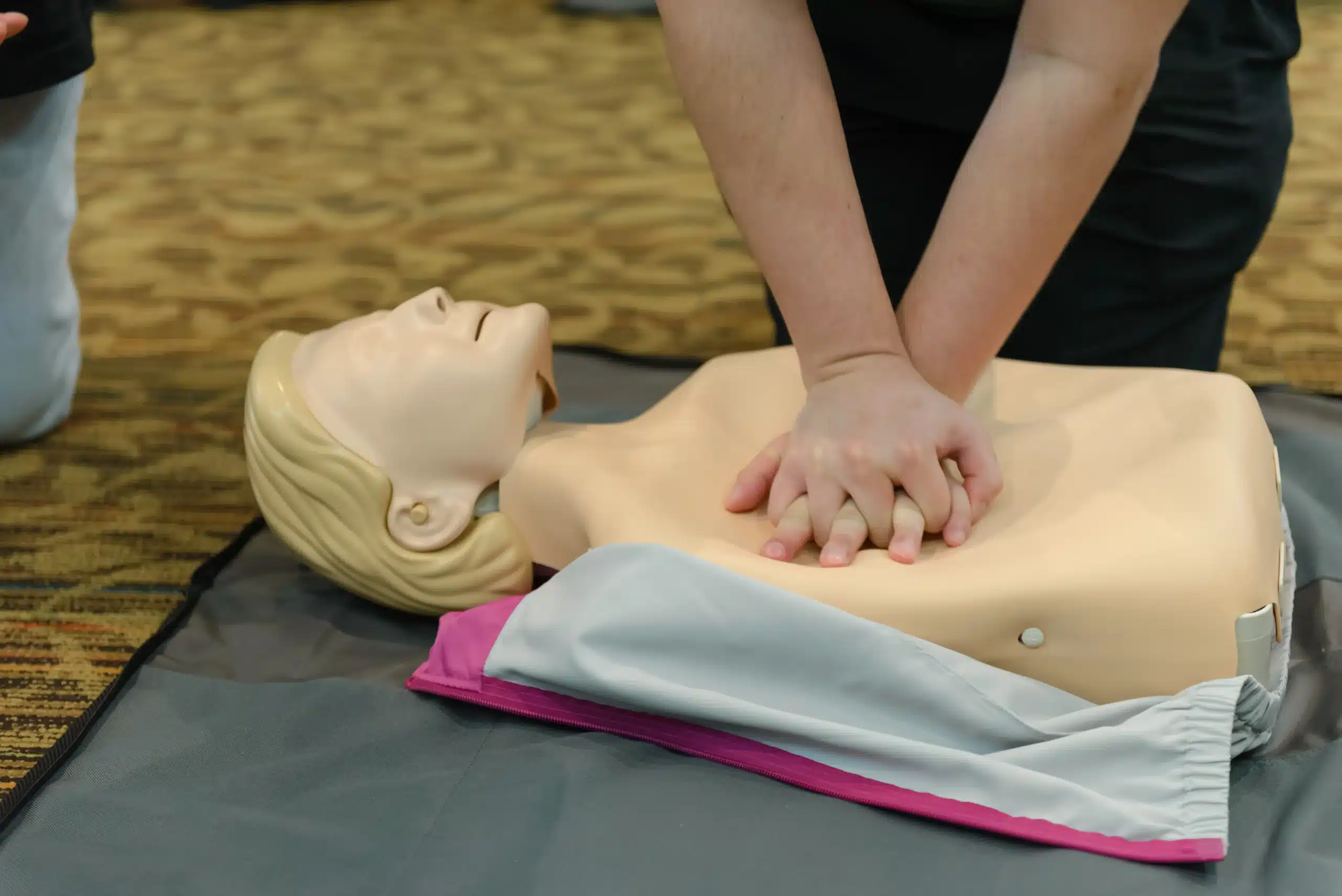Living in a vibrant city like San Francisco means being prepared for anything. From the bustling energy of Fisherman’s Wharf to a quiet stroll through Golden Gate Park, unexpected situations can arise. That’s why having a network of trained individuals ready to respond to emergencies is so vital. CPR and first-aid courses in San Francisco empower residents to become those vital first responders, equipped to handle everything from minor injuries to life-threatening situations. This post explores the importance of these skills, the various courses available, and how you can join San Francisco’s network of lifesavers. We’ll cover the range of options, from basic CPR to advanced life support, and highlight resources to help you find the right training for your needs.
Key Takeaways
- CPR and first aid training are invaluable in San Francisco: Being prepared for emergencies, from minor injuries to life-threatening situations, makes our city safer for everyone. Find the right course for your needs, whether you’re a healthcare provider, parent, or community member.
- Explore the range of training options available: Providers like Safety Training Seminars, the American Red Cross, and the American Heart Association offer various courses, formats, and certifications. Consider your schedule, budget, and learning preferences when selecting a course.
- Maintain your skills for long-term preparedness: Keep your certification current and refresh your knowledge regularly. Staying up-to-date on the latest guidelines ensures you can respond confidently and effectively in any emergency.
Why CPR and First Aid Matter in San Francisco
CPR and first-aid training are crucial for any city, but in a bustling metropolis like San Francisco, their value is amplified. Think about it: from crowded events like Bay to Breakers and Outside Lands to the everyday hustle and bustle of Market Street, emergencies can arise anytime, anywhere. Having trained individuals throughout the city creates a network of potential lifesavers ready to step in when seconds count. CPR and first-aid certification empower everyday people to make a real difference in critical situations.
Learning these skills isn’t just about responding to major incidents; it’s about being prepared for the unexpected in daily life. Whether it’s a child choking on a grape at a family picnic in Dolores Park or a fellow commuter experiencing a medical emergency on BART, your training can transform you from a bystander into a vital first responder. First-aid training equips you to handle everything from minor cuts and burns to more serious injuries, providing immediate care until professional medical help arrives. This rapid response can significantly improve outcomes, especially in time-sensitive situations like cardiac arrest or severe bleeding.
San Francisco, with its commitment to community well-being, recognizes the importance of widespread CPR and first-aid knowledge. The city actively promotes CPR training through various initiatives and partnerships with organizations like the American Red Cross and the American Heart Association. These collaborations ensure that high-quality, accessible training is available to all residents, fostering a culture of preparedness and resilience. Safety Training Seminars plays a key role in this effort by offering a range of courses at competitive prices, making these life-saving skills attainable for everyone. By investing in these skills, you’re not only protecting yourself and your loved ones but also contributing to a safer and more prepared San Francisco community.
CPR and First Aid Courses: What’s Available?
This section clarifies the types of CPR and first aid courses available in San Francisco, catering to various needs and skill levels. Whether you’re a healthcare provider, work in childcare, or simply want to be prepared for emergencies, there’s a course for you.
BLS: Basic Life Support
BLS certification focuses on single-rescuer and team-based CPR for adults, children, and infants. It also covers using an automated external defibrillator (AED) and relieving choking. BLS is a foundational course for healthcare providers and anyone working in healthcare settings. Safety Training Seminars offers BLS certification courses at their San Francisco location, known for their low prices and convenient schedules.
ACLS: Advanced Cardiac Life Support
ACLS builds upon the skills learned in BLS. This advanced course is designed for healthcare professionals who manage cardiopulmonary arrest and other cardiovascular emergencies. It covers topics like airway management, intravenous access, and pharmacology related to resuscitation. Safety Training Seminars also offers ACLS courses.
PALS: Pediatric Advanced Life Support
PALS focuses on the specialized approach required for pediatric emergencies. This course equips healthcare providers with the knowledge and skills to manage respiratory and cardiovascular emergencies in infants and children. You can find PALS certification at Safety Training Seminars, along with their other AHA courses.
First Aid Certification
First aid courses teach how to respond to common injuries like cuts, burns, and fractures. They also cover recognizing and managing medical emergencies like allergic reactions and strokes. While many organizations offer first aid training, it’s often bundled with CPR certification. The Safety Training Seminars blog has more information about CPR and first aid training in San Francisco.
Disaster Preparedness Training
While not strictly focused on CPR or first aid, disaster preparedness training provides essential skills for responding to large-scale emergencies. The San Francisco Fire Department’s NERT program is a valuable resource for learning about disaster preparedness, including basic first aid and disaster medicine. This training empowers individuals to assist their communities during and after disasters.
Top San Francisco CPR & First Aid Training Providers
Finding the right CPR and first-aid training provider is crucial for receiving high-quality instruction. Here’s a rundown of reputable options in San Francisco:
Safety Training Seminars
Safety Training Seminars offers a comprehensive range of American Heart Association-certified courses. From basic first aid and CPR training to advanced life support, they cover essential life-saving techniques. You can find their course schedule and register for BLS, ACLS, and PALS certifications directly on their website. They also offer the RQI program for healthcare professionals. Plus, they have a low-price guarantee, ensuring you get the best value for your training.
American Red Cross
The American Red Cross is a well-known provider of CPR and first aid training in San Francisco. Their courses equip participants with the skills to respond effectively to emergencies. Check their website for class schedules and locations.
American Heart Association
While the American Heart Association doesn’t directly offer courses, they set the standards for CPR and first-aid training. Many organizations, including Safety Training Seminars and the American Red Cross, offer AHA-certified courses, ensuring you receive training that meets national guidelines. You can explore more about CPR training options in this comprehensive guide.
San Francisco Fire Department (SFFD)
While the SFFD doesn’t typically offer regular CPR or first-aid classes to the public, their Neighborhood Emergency Response Team (NERT) program provides valuable training in disaster preparedness. This training includes basic first aid and disaster medicine components, empowering community members to assist during emergencies. For a complete guide to first-aid training in San Francisco, including information on the SFFD’s offerings, check out this helpful resource.
NERT (Neighborhood Emergency Response Team)
NERT is a crucial part of San Francisco’s community emergency response system. Their free training program includes a section on disaster medicine, equipping residents with the skills to handle medical emergencies during disasters.
Community CPR Initiative
San Francisco’s Community CPR Initiative aims to increase the number of CPR-trained individuals within the city. While details about specific courses might not be readily available online, the initiative highlights the city’s commitment to improving community emergency preparedness. You can find more information about CPR and first aid resources on the SF Fire website.
CPR Certification Institute
Several organizations, including Safety Training Seminars, offer a variety of CPR and first-aid courses tailored to different schedules and learning styles. This flexibility makes it easier to find a course that fits your needs. This guide to CPR and first-aid training in San Francisco offers a good overview of available options.
What to Expect in a CPR & First Aid Course
Knowing what awaits you can boost your confidence going into your CPR and first-aid training. Here’s what you should know about course formats, certification, and the skills you’ll gain:
Course Length and Formats
CPR and first-aid courses in San Francisco offer various formats to suit different learning styles and schedules. In-person classes provide hands-on training and direct interaction with instructors, while online courses offer flexibility for learning at your own pace. Blended learning often combines online theory with in-person practical sessions and assessments. Course length depends on the provider and certification level. This article on first-aid training explains how pricing can also vary based on course specifics.
Certification: Process and Validity
After successfully completing your course, you’ll receive a certification card, valid for two years, confirming your training. The process is simple, and cards are usually issued within 24 hours of finishing your hands-on training, according to CPR AED First Aid. Keep your card safe and note the renewal date.
Skills You’ll Learn
CPR and first-aid training gives you essential lifesaving skills. You’ll learn to recognize medical emergencies, respond effectively, and provide care until professional help arrives. This includes CPR techniques for adults, children, and infants, using an AED, and administering first aid for various injuries and illnesses. This guide highlights how this training prepares you for critical situations.
Hands-on Practice & Instructor Feedback
A key part of CPR and first-aid training is the hands-on practice. You’ll practice your skills on mannequins and receive feedback from certified instructors, building your confidence for real-life scenarios. San Francisco CPR classes are known for this practical approach, making them a great choice for comprehensive training.
Choosing the Right CPR & First Aid Course
Deciding on the right CPR and First Aid course can feel overwhelming with so many options. Don’t worry, it doesn’t have to be! By understanding your needs and knowing what to look for, you can find the perfect fit.
Factors to Consider
First, think about the practicalities. Course prices can vary based on the organization offering it (like the American Red Cross or American Heart Association), the course type (basic first aid, CPR/AED, or something more advanced), and whether you prefer online or in-person learning. Figuring out your budget and preferred learning style will help narrow down your choices. If you’re looking for CPR certification in San Francisco, Safety Training Seminars offers various options and a low price guarantee.
Matching Your Needs
Not all CPR and First Aid courses are the same. Some cater to specific professions, while others are designed for the general public. Consider why you’re taking the course. Are you a healthcare provider needing to maintain your license, or are you a parent wanting to be prepared for emergencies at home? Safety Training Seminars offers courses tailored to different needs, from basic CPR to advanced certifications like ACLS and PALS, and even the RQI program for healthcare professionals. Thinking about your specific goals will guide you to the right course.
Checking Provider Credentials
Finally, always check the credentials of the organization providing the training. Look for reputable organizations like the American Red Cross, American Heart Association, or those offering CPR classes and certifications, as they offer comprehensive training and recognized certifications. Safety Training Seminars provides high-quality American Heart Association (AHA) certified courses. Earning your certification from a trusted source ensures you’re receiving quality instruction and a widely accepted credential.
CPR & First Aid Course Costs & Accessibility
Knowing the price range for CPR and first aid training and what impacts it can help you budget and find the best course for your needs. Accessibility, both in terms of cost and scheduling, is a key factor for many San Franciscans looking to get certified.
Price Ranges & Value
CPR and first aid course costs in San Francisco vary based on several factors. The certifying organization (American Red Cross, American Heart Association, etc.) influences pricing, as do the course type and format. A basic first aid course will typically cost less than a combined CPR/AED certification. More advanced certifications like ACLS or PALS usually have a higher price tag. In-person training often costs more than online courses because of the overhead of facilities and equipment. Safety Training Seminars keeps prices competitive for these essential skills. Remember, the value of these courses goes beyond the certificate—it’s an investment in your ability to respond confidently during emergencies.
Low-Cost & Free Options
While free CPR classes with certification are rare in San Francisco, organizations like the American Red Cross and American Heart Association sometimes offer free community events. These are often one-time events and may not offer the same comprehensive training as paid courses. Free options usually don’t include certification, which is essential for many professional fields. The costs associated with running these courses, including certified instructors, equipment, and administrative overhead, make completely free certified training difficult to sustain. If free is your only option, consider these community events a valuable introduction to CPR. Keep in mind that a paid, certified course offers more in-depth training and the credential you might need for your job.
Group & Corporate Discounts
If you’re training a group, whether it’s for your workplace, community organization, or a group of friends, explore group discounts. Many training providers offer reduced rates for group bookings, making it more affordable to get certified together. Group training also creates a comfortable learning environment where participants can practice together. For businesses in San Francisco, investing in employee training, including CPR and first aid, shows a commitment to safety and preparedness. Contact providers directly to inquire about group or corporate rates and customize training. Often, providers can also integrate CPR training with first aid certification, streamlining the process and potentially offering further cost savings.
Online vs. In-Person CPR & First Aid Training
Deciding between online and in-person CPR and first aid training depends on your learning style, schedule, and specific requirements. Both formats have their own advantages and disadvantages. Let’s break them down to help you make the best choice for your needs.
Pros and Cons of Each
Online CPR and first aid training offers flexibility and affordability. You can learn at your own pace, on your own schedule. This format is often less expensive than in-person classes. However, online training typically doesn’t include the hands-on practice with equipment that some employers or certifying bodies require. Always check specific workplace or regulatory requirements before choosing online-only training. For example, if you need CPR certification for healthcare providers, an in-person skills check is likely mandatory.
In-person classes provide that essential hands-on learning. You’ll receive real-time feedback from certified instructors, practice your skills, and ask questions. This direct interaction can build confidence and ensure you’re fully prepared for real-life emergencies. The trade-off? In-person classes require a greater time commitment, as you’ll need to travel to a specific location and attend the entire session. They also tend to be more expensive than online options.
Hybrid Learning
Hybrid learning combines the best of both worlds. You’ll complete the cognitive portion of the course online, learning the theory and procedures at your own speed. Then, you’ll attend a shorter, in-person skills session to practice and receive instructor feedback. This blended approach offers flexibility while still meeting the hands-on training requirements of most certifications, including those from the American Heart Association. Many providers, including Safety Training Seminars, offer these hybrid courses, often integrating CPR training with first aid certification.
Effectiveness & Hands-on Practice
While online courses are convenient, the effectiveness of CPR and first aid training depends heavily on hands-on practice. Research shows that skills retention fades over time, especially without regular reinforcement. In-person training allows you to develop muscle memory and refine your technique under the guidance of an expert. This physical practice is crucial for building the confidence and competence needed to respond effectively in a real emergency.
Maintaining Your CPR & First Aid Certification
Once you’ve earned your CPR and First Aid certifications, staying current with the latest techniques and guidelines is essential. Knowing how to maintain your certifications ensures you’re always prepared to respond effectively in an emergency.
Renewing Your Certification
CPR and First Aid certifications typically expire after two years. It’s crucial to renew your certification before it lapses to maintain your qualifications and demonstrate your continued competence. Renewal courses cover any updates to guidelines and procedures, ensuring your skills are aligned with current best practices. Safety Training Seminars offers convenient renewal courses for certifications that are expiring or have recently expired. Check our course calendar for upcoming renewal class schedules and to register.
Continuing Education
Even if your certification isn’t due for renewal yet, continuing education is highly valuable. The American Red Cross emphasizes the importance of regularly refreshing your CPR and First Aid skills. Short refresher courses, often available online, can reinforce your knowledge and help you retain crucial information. This ongoing practice builds confidence and ensures you can react swiftly and efficiently under pressure.
Staying Up-to-Date
Staying informed about changes in CPR and First Aid practices is a key part of maintaining your skills. Free online resources and refresher materials can help you stay aware of any updates to guidelines or procedures. These resources, often offered by organizations like the Red Cross, provide a convenient way to keep your knowledge sharp between renewals. Regularly reviewing these materials ensures you’re always prepared to provide the most effective care possible.
Common CPR & First Aid Training Concerns
It’s normal to have a few questions before signing up for a CPR or first-aid class. Let’s address some common concerns:
Course Difficulty & Time Commitment
One of the first questions people ask is, “How hard is CPR training?” First-aid and CPR courses are designed to be accessible to everyone, regardless of prior medical experience. The curriculum breaks down complex concepts into easy-to-understand steps. Plus, instructors create a supportive learning environment where you can comfortably ask questions and practice. CPR classes in San Francisco often incorporate group practice sessions, giving you a chance to learn alongside others and build confidence.
In terms of time commitment, courses vary depending on the provider and the type of certification. Basic first-aid and CPR/AED combination courses typically take a few hours, while more advanced certifications like ACLS or PALS require a longer time investment. Check with your chosen provider, such as Safety Training Seminars, for specific course durations and costs.
Certification Recognition
Another frequent question is about certification validity. Different organizations, like the American Red Cross and the American Heart Association, offer CPR and first-aid certifications. The duration of these certifications can vary, but they are typically valid for two years. Always confirm the certification period with your chosen training provider. If you’re looking for CPR classes in San Francisco, both organizations offer courses throughout the city.
Using Your Skills
Many people worry about whether they’ll be able to recall and apply their training in a real emergency. The key to retaining these vital skills is practice. Regularly reviewing the material and refreshing your knowledge can make a significant difference. Some providers offer refresher courses or online resources to help you stay sharp. Remember, learning CPR and first aid empowers you to assist others in critical situations and contributes to a safer community in San Francisco. The impact of these skills extends beyond individual participants, creating a network of prepared individuals ready to respond to emergencies. You can learn more about the community impact of these courses.
Getting Started with CPR & First Aid Training in San Francisco
So, you’re ready to learn CPR and first aid? Awesome! It’s a rewarding experience, and you’ll gain skills that can truly make a difference. This section breaks down everything you need to know to get started with CPR and first aid training in San Francisco.
How to Enroll
Enrolling in a CPR or first aid class is easier than you might think. Several organizations offer convenient online registration. Safety Training Seminars offers various courses right here in San Francisco, with options for BLS, ACLS, PALS, and more. You can also explore options through the American Red Cross, which provides CPR and first aid classes throughout the city. Many providers also offer in-person registration if that’s more your style. Browse their websites or give them a call to find a class time and location that works for you.
Course Prep
Before your class, it’s helpful to do a little prep work. Think about what you want to achieve with your training. Are you looking for basic first aid knowledge or a more advanced certification like ACLS? Knowing this will help you choose the right course. Also, consider the cost. Pricing can vary depending on the provider and the type of course. Safety Training Seminars is known for its competitive pricing, so that might be a good place to start your research. Finally, check if there are any required materials you need to purchase or review beforehand.
Resources for Continued Learning
CPR and first aid skills require ongoing practice. After you’ve completed your initial training, look for ways to refresh your knowledge. The American Red Cross emphasizes the importance of regular practice to maintain proficiency. Consider taking refresher courses or finding online resources to keep your skills sharp. Safety Training Seminars offers various resources and advanced courses, including their RQI program, to help you stay up-to-date on the latest guidelines. Staying current with best practices will ensure you’re always prepared to respond effectively in an emergency.
Related Articles
- First-Aid Training in SF: Your Complete Guide – San Francisco CPR Classes
- CPR Classes in SF: Your Certification Guide – San Francisco CPR Classes
- Why CPR is Important in Healthcare – San Francisco CPR Classes
- Low-Cost CPR Training in Northern California: A Guide – San Francisco CPR Classes
- CPR Certification Near Me: Find the Right Class Today – San Francisco CPR Classes
Frequently Asked Questions
How much do CPR and first-aid courses cost in San Francisco? Course costs depend on the certifying organization (American Red Cross, American Heart Association, etc.), the type of course (CPR, first aid, or a combined course), the level of certification (basic or advanced), and whether you choose online or in-person training. In-person courses typically cost more due to facility and equipment expenses. Check with specific providers like Safety Training Seminars for their pricing. They often have a low-price guarantee.
What’s the difference between CPR and first aid? CPR (cardiopulmonary resuscitation) focuses on restoring breathing and circulation in someone who has stopped breathing or has no pulse. First aid covers a broader range of medical emergencies, from minor injuries like cuts and burns to more serious situations like choking or allergic reactions. Often, these two are taught together in combination courses.
Do I need to renew my CPR and first-aid certification? Yes, CPR and first-aid certifications typically expire after two years. Renewal courses are essential to stay up-to-date with the latest guidelines and maintain your credentials.
Are online CPR and first-aid courses as good as in-person classes? Online courses offer flexibility and convenience, but they may not include the hands-on practice crucial for developing and retaining these skills. Some certifications require in-person skills assessments, even if the coursework is online. In-person classes provide direct interaction with instructors, real-time feedback, and the opportunity to practice on mannequins, which can significantly boost your confidence. Hybrid courses, combining online learning with in-person skills sessions, offer a good balance.
What if I’m nervous about using my CPR or first-aid skills in a real emergency? It’s completely normal to feel apprehensive. The key to overcoming this is regular practice and staying up-to-date with your training. Refresher courses and online resources can help reinforce your knowledge and build your confidence. Remember, even basic CPR and first aid can significantly improve someone’s chances of survival until professional help arrives.


